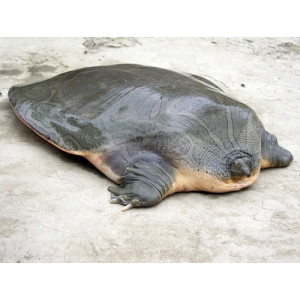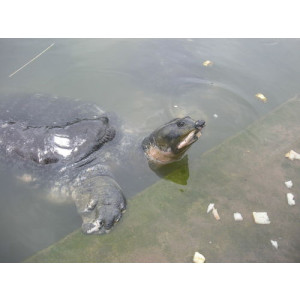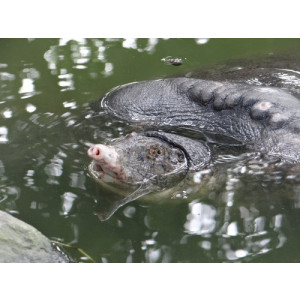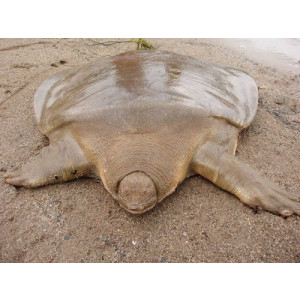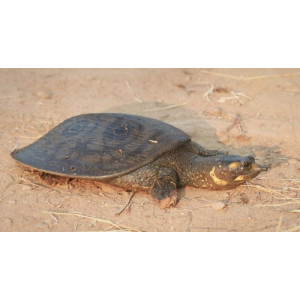Spotted Flapshell Turtle Did you see this animal?
Scientific Name : Lissemys punctata
Family : Trionychidae
Order : Testudines
Class : Reptilia
Phylum : Chordata
Other Name : Indian Flap-shelled Turtle
Habitat : Ponds, Lakes, rivers, cnals.
Description : They have a flat, smooth, oval-shaped shell that is brown or black with yellow or orange spots. The shell is covered in small ridges and bumps, and it can grow up to 45 cm (18 inches) in length.
Their head is relatively small and pointed, with a distinctive long and narrow snout. The upper jaw is slightly hooked, which helps them catch and hold onto prey.
They have powerful, webbed feet that are adapted for swimming and digging. The front feet have long claws that are used for digging nests and catching prey.
They are primarily herbivorous, feeding on aquatic vegetation, but they will also eat insects, crustaceans, and small fish.
Spotted Flapshell Turtles are typically found in slow-moving rivers, lakes, and ponds with muddy or sandy bottoms. They are also commonly found in rice paddies and other agricultural fields.
They are known for their strong, pungent odor, which they use to deter predators and attract mates.
These turtles are popular in the pet trade, and they are also used for food and traditional medicine in some parts of their range.
The Spotted Flapshell Turtle is listed as Least Concern on the IUCN Red List of Threatened Species, but it is threatened by habitat loss, pollution, and overharvesting for the pet and food trade in some areas. Conservation efforts include habitat restoration, captive breeding programs, and public education campaigns to reduce demand for wild-caught individuals.
Their head is relatively small and pointed, with a distinctive long and narrow snout. The upper jaw is slightly hooked, which helps them catch and hold onto prey.
They have powerful, webbed feet that are adapted for swimming and digging. The front feet have long claws that are used for digging nests and catching prey.
They are primarily herbivorous, feeding on aquatic vegetation, but they will also eat insects, crustaceans, and small fish.
Spotted Flapshell Turtles are typically found in slow-moving rivers, lakes, and ponds with muddy or sandy bottoms. They are also commonly found in rice paddies and other agricultural fields.
They are known for their strong, pungent odor, which they use to deter predators and attract mates.
These turtles are popular in the pet trade, and they are also used for food and traditional medicine in some parts of their range.
The Spotted Flapshell Turtle is listed as Least Concern on the IUCN Red List of Threatened Species, but it is threatened by habitat loss, pollution, and overharvesting for the pet and food trade in some areas. Conservation efforts include habitat restoration, captive breeding programs, and public education campaigns to reduce demand for wild-caught individuals.
Distribution in Bangladesh
References:
description written by: Durjoy Raha Antu,Department of Zoology, Jagannath University,Dhaka; information source:Encyclopedia of Flora and Fauna of Bangladesh, Vol. 25. Amphibians and Reptiles. Asiatic Society of Bangladesh, Dhaka.; photo credit:Allan Hopkins(www.inaturalist.org/people/Allan Hopkins), photo copyright: iNaturalist. more information please contact with us.
description written by: Durjoy Raha Antu,Department of Zoology, Jagannath University,Dhaka; information source:Encyclopedia of Flora and Fauna of Bangladesh, Vol. 25. Amphibians and Reptiles. Asiatic Society of Bangladesh, Dhaka.; photo credit:Allan Hopkins(www.inaturalist.org/people/Allan Hopkins), photo copyright: iNaturalist. more information please contact with us.

